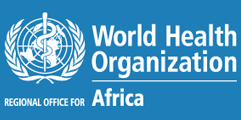 Nov. 6, 2014
Nov. 6, 2014
...a WHO-coordinated retrospective study, published in the New England Journal of Medicine, provides evidence that supportive care, especially rehydration and correction of metabolic abnormalities, may contribute to patient survival.
The study analysed clinical data on 37 confirmed Ebola patients admitted for treatment at hospitals in Conakry, Guinea’s capital and most densely populated city.
The cases occurred during the first month of West Africa’s first outbreak of Ebola virus disease. Fourteen of the patients were heath care workers. The majority (12) acquired their infection in a health care setting.
The majority (65%) of patients were male, countering assumptions that women, who are more likely to provide home care for patients and prepare bodies for funerals and burials, are more frequently exposed and infected.
To replace fluids lost through severe diarrhoea, 36 patients (97%) received oral rehydration solution. Additional intravenous fluid resuscitation was given to 28 (76%) patients.
Read complete press release
Recent Comments